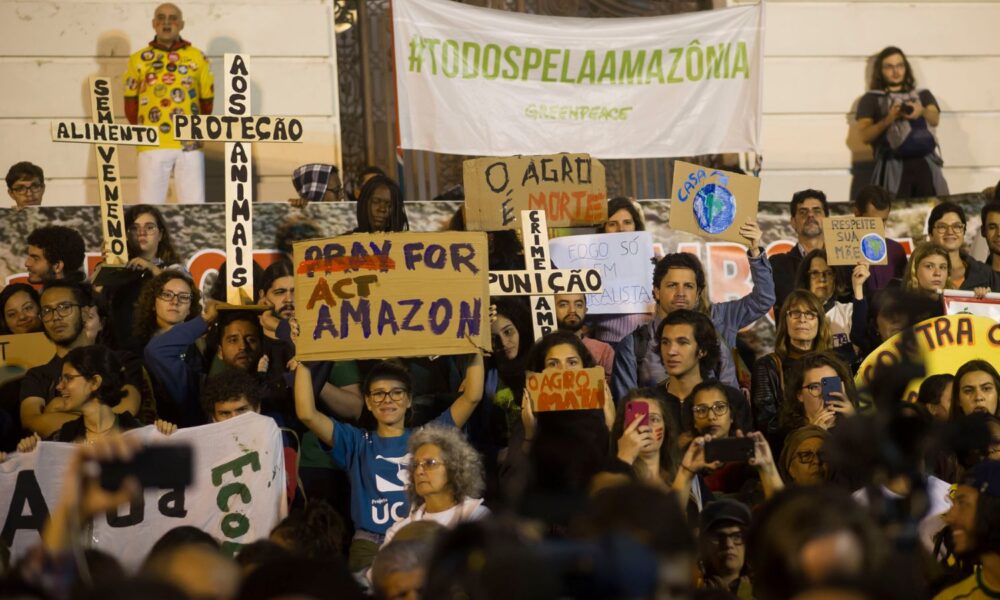Next month, COP30—or the UN Conference of the Parties to the United Nations Framework Convention on Climate Change (UNFCCC)—returns to my home country of Brazil, in Belém. The UNFCCC is the treaty adopted by most of the world’s countries in 1992 to stabilize greenhouse gas concentrations and prevent dangerous human-induced interference with the climate system.
Longer ago than I like to think about… I was actually in Brazil for the UN’s Conference on Environment and Development, or the ‘Earth Summit’, which is where the UNFCCC was adopted. Also known as “Rio 1992,” that conference focused on the environmental impacts of socio-economic activities and the interdependence of social, economic, and environmental factors for the sustainability of our planet, leading to some of the first sustainable development goals. And alongside the UNFCCC, two other conventions dedicated to studying and preventing habitat and biodiversity loss and desertification were formed. They are the Rio Conventions, which include the Convention on Biological Diversity (CBD, also known as UN Biodiversity).
At COP30, world leaders will negotiate over emissions targets, nationally determined contributions, and loss and damage. But other, equally important conversations about biodiversity will be happening. I have been especially involved in the CBD, biodiversity and ecosystems, and want to talk a bit more about those, and their presence and importance at COP30.
Climate change and biodiversity go hand-in-hand
One impacts the other and vice-versa, simple as that.
The biodiversity impacts of climate change have been multiplying at an alarming rate. Rising emissions warm the atmosphere, leading to not only loss of species, but loss of species functions in essential ecosystems, because conditions do not allow for those functions to persist. For example, losing a predatory species will lead to an abundance of its prey. Losing a plant species at the base of a food chain could disrupt the entire chain. These effects are worsened by land use changes—in particular, the depletion of natural resources and deforestation. All these impacts can lead to the collapse of entire ecosystems that provide services to the earth and its inhabitants. Services such as the water we get for “free,” and the filtering of pollution by the soil as it seeps in; the lumber and resources that traditional forest communities depend on; or hunting for traditional Indigenous communities. Hence, action to prevent further warming (and keep warming as close as possible to 1.5C) is essential to the protection of biodiversity and ecosystems.
Conversely, protecting and maintaining biodiversity is also a part of the solution to achieving a stable climate, because species loss means loss of carbon stored in those organisms. Healthy forests are essential to keep carbon stored. The significance of COP30 happening in the Amazon cannot be overstated: the role that forest sinks play in a livable climate future, the continuing pressures of deforestation and its consequences for the rights of Indigenous and traditional forest communities, and the rising risk of we facing a “tipping point” for the Amazon and other tropical forests has been and will certainly be in everyone’s minds.
That is why there will be various negotiations related to biodiversity, ecosystems, and forests during COP30.
What we are watching
- Climate and Nature Commitments: Key commitments and targets from the CBD and the UNCDD related to climate, biodiversity, forests, and human rights (especially Indigenous rights) must be embraced and implemented by the UNFCCC also. The nature-climate synergies must be part of the negotiations in order for the Rio Conventions to work together towards ambitious, just, and integrated implementation of the three conventions. There must be a clear path to cooperation across the conventions for their synergistic goals on nature, climate, and people to be achieved successfully.
- Land rights, ecosystems, and just transition: Just transition, under the UNFCCC, means that the goals of the Paris Agreement (to keep warming well below 2C, among others) are achieved justly and equitably, so that the socioeconomic benefits of a transition to cleaner and more sustainable energy are shared equally across all peoples. Under that lens, it is imperative that land rights, especially of Indigenous peoples and traditional communities, are included and recognized in the outcome of the negotiations, as well as ecosystems’ integrity and protection.
- Forests: Forests are part of the overarching issue of biodiversity. Because of their complexity, global distribution, and roles in economies and traditional livelihoods, they tend to be treated almost separately within the context of the CBD. During this COP, Brazil is launching a new global mechanism (“facility,” in UNFCCC terms) that aims to provide a source of finance to support the long-term conservation of tropical forests. The Tropical Forest Forever Facility (TFFF) has been in the works since COP28 in 2023, and currently, Brazil, Colombia, Ghana, the Democratic Republic of Congo, Indonesia, and Malaysia have joined the initiative, with five potential investor countries: Germany, the United Arab Emirates, France, Norway, and the United Kingdom. While several organizations are supportive of the mechanism (with caution, see here and here), others are outright against it, claiming that it will not solve the issue of deforestation drivers in the Global South, among other concerns (e.g. here and here). The issue is expected to be a closely watched one during COP30.
Our eyes—and hopes—are at COP30
The global conversation about the environment and impacts of social, economic, and environmental factors for the sustainability of our planet started 33 years ago in Brazil. The Rio Summit began bringing people together to work on the climate crisis. Will coming full circle bring outcomes that will lead us closer to limiting climate change? I can only hope for something equally transformational at this year’s conference.

